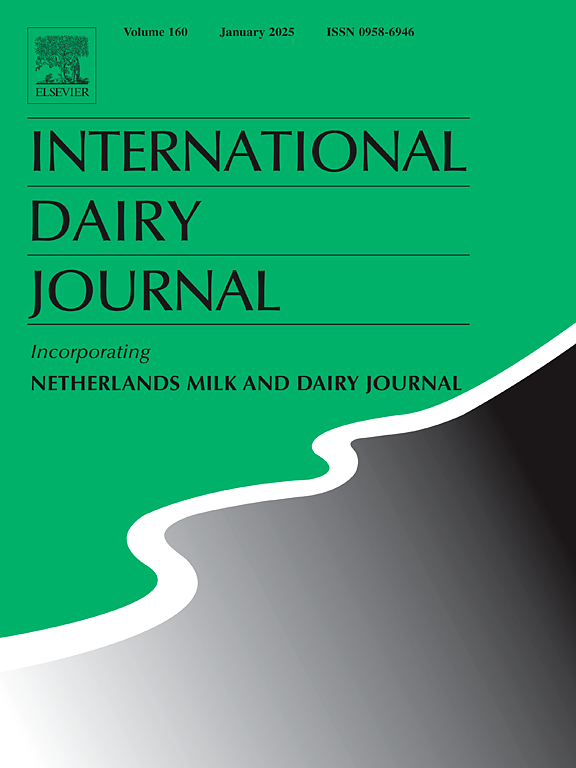Linking milk homogenization to meltability and microstructure of cheese
IF 3.4
3区 农林科学
Q2 FOOD SCIENCE & TECHNOLOGY
引用次数: 0
Abstract
This study examines the impact of milk homogenization on cheese melting properties and microstructure. Cheese made from non-homogenized milk shows a higher ratio of elastic moduli at 20 and 80 °C, reflecting a gel stabilized mainly by non-covalent bonds. All samples display typical protein gel network structures. As homogenization pressure increases, both tan δmax and flow degree (FD) generally decrease. The impact of mixing milks with different homogenization levels on melting properties is complex. Considering particle size distribution, the study analyzed the effects of mixing milks and classified fat globules: those from non-homogenized milk (1.3–10.3 μm) as passive fillers; smaller globules as active fillers, calculating the active/passive filler ratio. Multiple linear regression models were developed to identify significant variables influencing tan δmax, FD, and G’. For tan δmax and FD, the best predictors were dry matter (DM), d50,3, and their interaction. For G’, d50,3 and the active/passive ratio were significant.
将牛奶均质化与奶酪的可熔化性和微观结构联系起来
本研究考察了牛奶均质化对奶酪融化特性和微观结构的影响。由非均质牛奶制成的奶酪在20和80℃时显示出更高的弹性模量比,反映出凝胶主要由非共价键稳定。所有样品均显示典型的蛋白凝胶网络结构。随着均质压力的增大,tan δmax和流动度(FD)普遍减小。混合不同均质水平的牛奶对熔化性能的影响是复杂的。考虑到颗粒大小分布,研究分析了混合牛奶对脂肪球的影响,并将非均质牛奶中的脂肪球(1.3 ~ 10.3 μm)分为被动填料;较小的小球作为活性填料,计算活性/被动填料比。建立了多元线性回归模型,以确定影响tan δmax, FD和G '的显著变量。tan δmax和FD的最佳预测因子为干物质(DM)、d50、d3及其相互作用。对于G′、d50、3和主动/被动比具有显著性。
本文章由计算机程序翻译,如有差异,请以英文原文为准。
求助全文
约1分钟内获得全文
求助全文
来源期刊

International Dairy Journal
工程技术-食品科技
CiteScore
6.50
自引率
9.70%
发文量
200
审稿时长
49 days
期刊介绍:
The International Dairy Journal publishes significant advancements in dairy science and technology in the form of research articles and critical reviews that are of relevance to the broader international dairy community. Within this scope, research on the science and technology of milk and dairy products and the nutritional and health aspects of dairy foods are included; the journal pays particular attention to applied research and its interface with the dairy industry.
The journal''s coverage includes the following, where directly applicable to dairy science and technology:
• Chemistry and physico-chemical properties of milk constituents
• Microbiology, food safety, enzymology, biotechnology
• Processing and engineering
• Emulsion science, food structure, and texture
• Raw material quality and effect on relevant products
• Flavour and off-flavour development
• Technological functionality and applications of dairy ingredients
• Sensory and consumer sciences
• Nutrition and substantiation of human health implications of milk components or dairy products
International Dairy Journal does not publish papers related to milk production, animal health and other aspects of on-farm milk production unless there is a clear relationship to dairy technology, human health or final product quality.
 求助内容:
求助内容: 应助结果提醒方式:
应助结果提醒方式:


